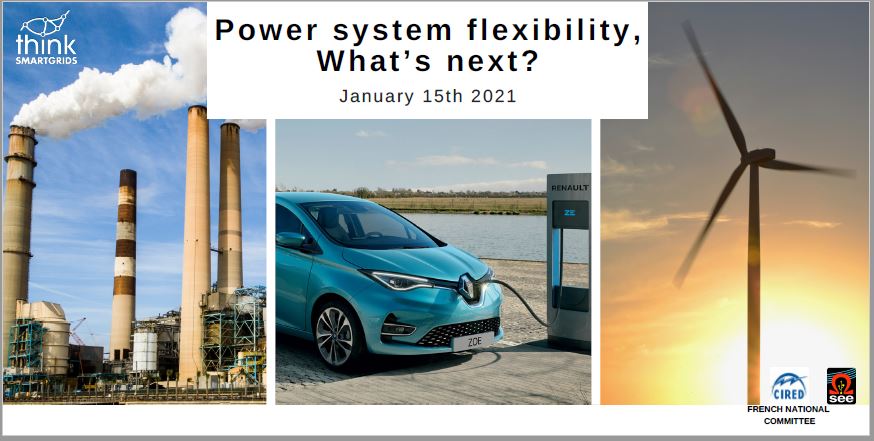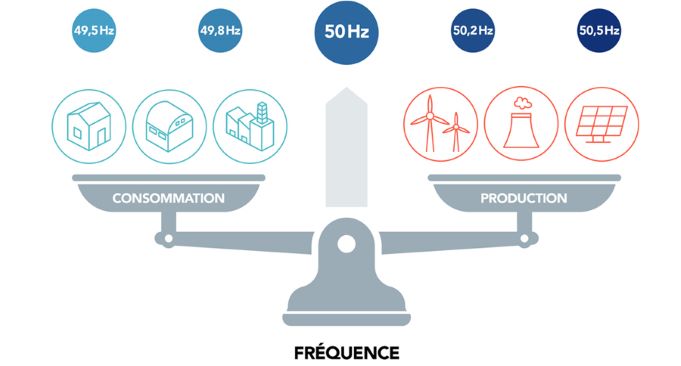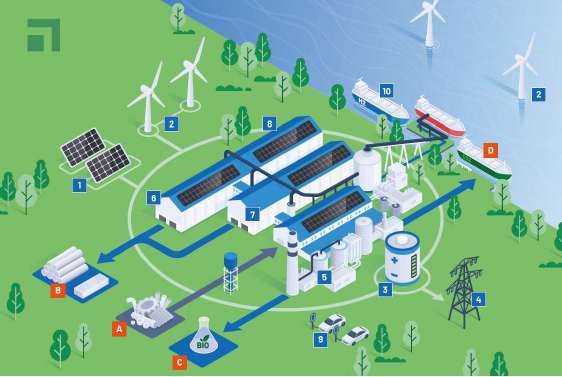The flexibility of the power system is difficult to define, as it has so many definitions and levers, from the producer to the end consumer. However, it is an essential tool for meeting the challenge of the energy transition, particularly for integrating a growing share of variable renewable energy into the grid, as well as for optimizing energy production and consumption.
On Friday, January 15th, Think Smartgrids organized, in partnership with the Société de l’électricité et de l’électronique (SEE) and the French national committee of CIRED, a webinar to review the various levers of flexibility of power grids.

As recalled by Alain Malot, expert at Schneider Electric and professor at Grenoble INP, the word “flexibility” is mainly used as an umbrella term to refer to all the levers allowing to vary the production and/or consumption of energy thanks to external signals (e.g. price signals), both on a very short time and on longer periods. It can concern energy producers, as well as the deployment of storage capacities and active network management tools, or consumers, whether they are private individuals or manufacturers.
As part of the energy transition, flexibility is playing an increasing role, not only in optimizing energy supply, but also in balancing and managing the power system. Charles Verhaeghe , head of the electricity transmission department at the French Energy Regulatory Commission (CRE), explains that France benefits from a very favorable regulatory framework that has allowed grid operators to conduct numerous experiments. All market segments are now open to flexibility operators and demand side management is playing an increasing role, covering more than 20% of the balancing reserves of the electricity network. Similarly, with the “capacity mechanism” applied since 2017, demand response capacities have contributed to guaranteeing the security of electricity supply and the storage capacities of the French network have increased significantly with the introduction in 2019 of a multi-year tender scheme. Finally, the “NEBEF” system (Wholesale market Demand-Side Bidding), which since 2013 has allowed energy stakeholders to sell demand response directly on the daily and intraday energy markets, has authorized the participation of individual consumers and independent aggregators, resulting in a significant increase in the volumes sold and the number of participating players.
Flexibilities are also a lever for optimizing network investments. For example, during the review of the French TSO RTE’s 10-year plan, the CRE validated the implementation of optimal network sizing: a 0.3% modulation of renewable generation will save €7 billion in transmission network investments by 2035. RTE’s roadmap on flexibility and the experiments carried out by Enedis will enable us to go even further in mobilizing flexibilities to serve the power grid.

Europe, which is already at the forefront of generation flexibility and the use of flexibility on balancing markets at any time horizon, is now progressing fast in terms of demand flexibility, as shown in a 2020 report by the International Energy Agency. A second report by the European association SmartEN, published in November 2020, also highlights that France is one of the most advanced EU countries on the subject.
Hubert Dupin, Head of Enedis’ Flexibility department, confirms that the main French distribution grid operator actively embeds flexibility in its network design and operations processes to make it “business as usual” within the next three years.
The DSO has launched several real-life experiments to manage constraints on the grid. As early as 2017, experimental “flexible” grid connection contracts (known as Alternative, “conditional” or “Smart” Connection Offers) have been offered to producers, then to consumers the following year: such connection framework offers a cheaper, and often faster, connection. Savings are significant and are estimated by Enedis at 90 k€/MW. The goal is to industrialize flexible connections for producers by the end of 2021.
Mr. Dupin also mentions the important role of flexibility solutions in reducing the cost of the energy transition and the connection of renewable energies: Enedis estimates that flexibilities would enable savings of up to 30% on the “primary electrical substations” that connect the distribution to the transmission system, with a very low loss of “green electrons”, estimated at less than 0.06%. A real-life experiment on 8 primary substations will be launched in 2021, with the aim of industrializing this solution by 2024.
In 2020, Enedis carried out the first tenders for local flexibility services in real conditions, which resulted in two contracts being signed. Enedis commits to analyze the constraints of the network and publish the opportunities for flexibilities (where, when, how much) wherever flexibilities can be useful to the power grid and inserted into its operational processes.
Hubert Dupin reminds us of the objective of grid operators: to constantly seek the optimum cost-efficiency, by making the most of all available technologies. Flexibilities are now part of the available technologies and compete with “traditional“ levers: DSO will choose the best solution (flexibility or traditional lever) from a cost / efficiency perspective to solve the constraints on the network.

Emmanuel Cantegrel, Senior VP Business & International Development of Energy Pool, operator of Flexibility on the electrical network, points out that flexibility, in addition to its important role in decarbonizing our energy networks, also allows to improve the competitiveness and sustainability of the industries participating in demand-side flexibility. He cites the example of the aluminum producer Aldel in the Netherlands that Energy Pool accompanied to convert their installations, to set up the interface with the Dutch system operator TenneT and to operate the load modulation 24h/24. The largest consumer of electricity in the country, with 150 MW of annual consumption, first established a roadmap for “repurposing” the plant, in order to contribute to the stability of the power grid in return for a fee, then initiated a process for the reduction of its CO2 emissions and the deployment of energy storage solutions, and finally plans to develop by 2030 CO2 capture solutions to be reused in sustainable bio-based products or destined for geological storage (CCS).
Emmanuel Cantegrel underlines that one of the interesting aspects of the project has been the modernization of the plant: in addition to the remuneration received for the service it provides to the grid, the work carried out for the implementation of flexibility services has improved the plant’s competitiveness and productivity. Energy Pool, which provides the platform, the flexibility services and the operation of these services, makes it a point of honour to ensure that the flexibility does not hinder the activities of the participating players.
French companies are also involved in numerous projects at the European level to accelerate the development of flexibility on the continent, at a time when the EU has set ambitious targets for increasing the share of renewable energy. Lina Ruiz Gomez, Head of the Energy Valorization Unit at Engie Green and Marine Joos, Grid&Energy Planner Coordinator at Hespful, presented the first results of REstable and the demo-project REgions, two European collaborative projects supported by ADEME (French agency for the energy transition) that aim to demonstrate the feasibility of providing ancillary services by “virtual” renewable energy power plant (VPP) to regional and European markets. REstable (2016-2019) has demontrated by a series of live tests that a VPP composed only of wind and solar plants is in capacity of providing high quality primary (FCR), secondary (aFRR) and tertiairy (RR, mFRR) reserves to the network. Key Performance Indicators (KPI) indicates the response time (activation, deactivation) and values in the fulfilment corridor. REgions will delve with congestion management, voltage support and constrained reserves at the 63kV grid level and above. Thus, first feedbacks are promising: by aggregating the renewable productions in a “virtual” power plant, they will be able to access the ancillary services markets, to the condition that the rules are adapted to these variable type of production (time horizon of bidding, performance control…).
Yannick Jacquemart, Power System Economics Director at RTE, the French transmission system operator, concludes that the flexibility needs of power grids to complete the energy transition will undoubtedly be very high, especially on the demand side, and that flexibility must become an integral part of network management, with increased cooperation between transmission and distribution to meet the new constraints on the networks. Numerous experiments have already been successfully conducted, and grid operators already have the required expertise. What remains now is to conduct the necessary profitability analyses to evaluate the situations in which the use of these solutions is now relevant. It is worth recalling that this profitability is highly system-dependent. Hence, some solutions may be interesting for the power systems of many countries, even when they are not immediately relevant to the French grid. But the numerous demonstrators developed in recent years show that French manufacturers have all the expertise to develop them.



